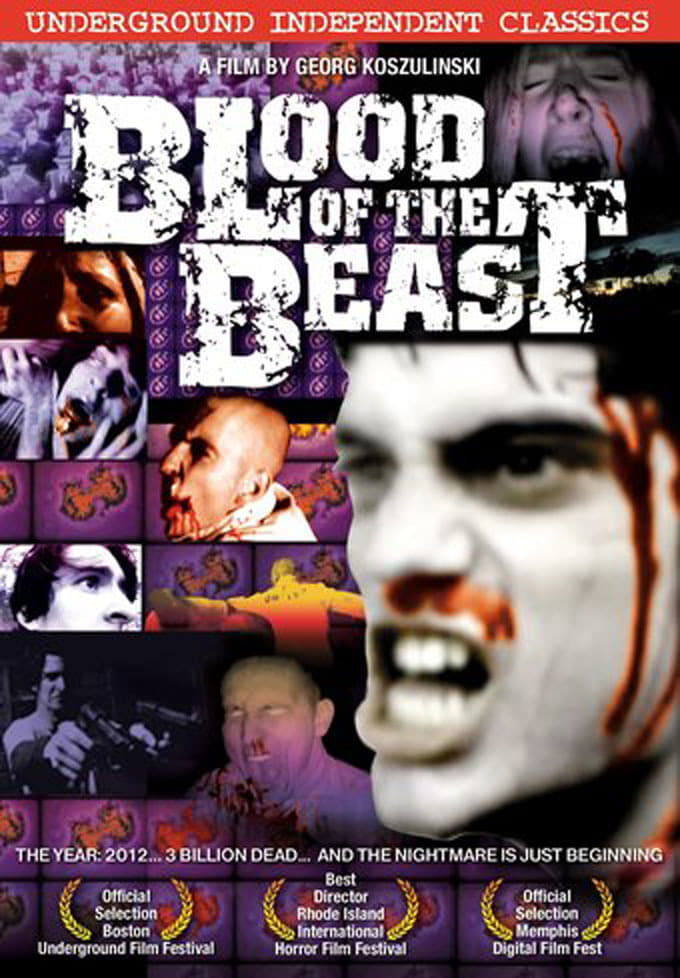
In the year 2012, the 3rd great war comes to an end. The war claims no victors, but both sides succeed in executing their chemical warfare campaigns. The result is over 3 billion deaths. Over ninety-eight percent of the male survivors are rendered sterile. Human reproduction is realized by means of cloning. The first strand of clones are harvested in December of 2012 and received with overwhelming success. It was not until nineteen years later that the first problems arose.
20 Jan Blood of the Beast (2003)
Preparation for the End
An IMDb reader of my comments sent me this for viewing. I’m glad, because nearly all low budget movies seem bad. You need a prompt or hint to invest viewing energy to discover or invent the elements that make few of them interesting.
I’ve never let bad, even terrible production values get in the way of a good movie. One key threshold is whether the filmmaker expects us to take him (and more importantly his images) seriously. A clever fellow, like the guy behind “Robot Monster” will use the inadequacies of the thing to their advantage. (“Robot Monster” is a ten year old’s dream, and is how one might imagine a ten year old dreams.)
There are more than a few barriers to this movie besides the production values. There are lots of past, present future overlaps, something we get early on and which advised me to invest in this: the first scene is of a painter surrogate for the filmmaker creates a painting of the future that becomes a film of the past.
There’s another blend, conflating the structure of wars, computer programs, DNA in clones, and (we find later) the dogma of Christianity. Both of these aren’t easy to get; this filmmaker has a lot to learn about conveying these things if he wants to bring us into such complex territory.
These simple rules allow for some lengthy setup in the first fifty minutes or so involving some combination of extremes: clumsy exposition and rather hard to read cinematic inference, including images of cows a la Medem.
At any rate, we end up in a “Night of the Living Dead” situation, except where Romero’s design was to say essentially nothing about why the situation exists, here we have the deep background which completely reinterprets what follows though it superficially looks familiar.
Does it matter in the final 12 minutes which is 100% without dialog, using cards instead? Does all that dreary setup pay off? Well, yes, if you like “Begotten” and appreciate the self-awareness of the film itself disintegrating. Yes if you relish the standoff being two “normal” people against the “zombies” and know that one of these is the writer/director/star who you see destroyed in front of the “Alice in Wonderland” character (whose fate you cannot see because our narrator is gone).
Yes, if you caught the significance of the important scene where a zombie copulates with the rotting corpse of his half eaten victim.
After all, movies like this are all about what you remember, not what you see.
Posted in 2005
Ted’s Evaluation — 2 of 3: Has some interesting elements.


No Comments